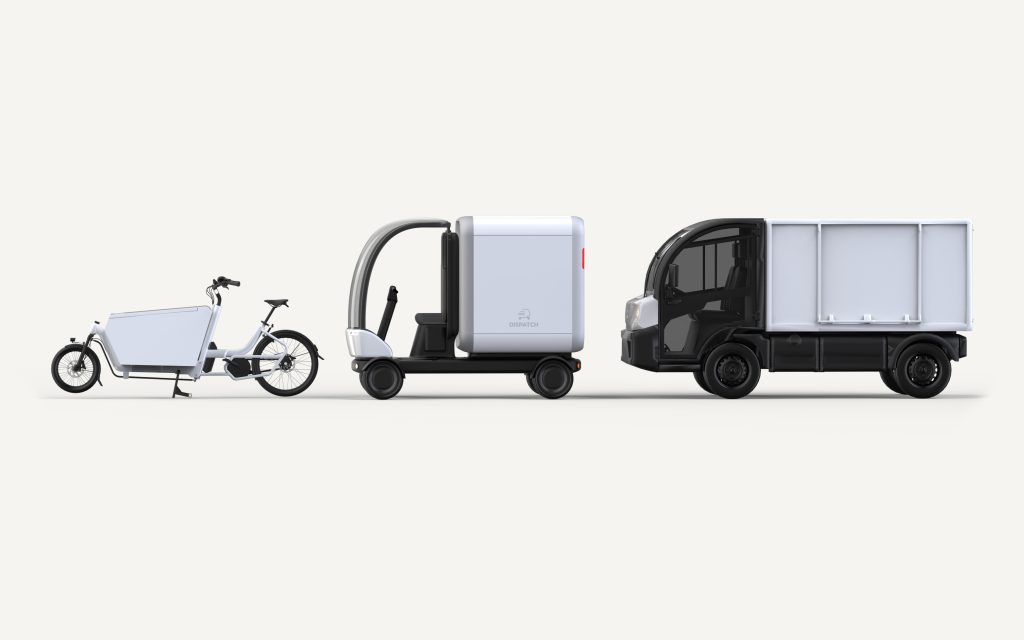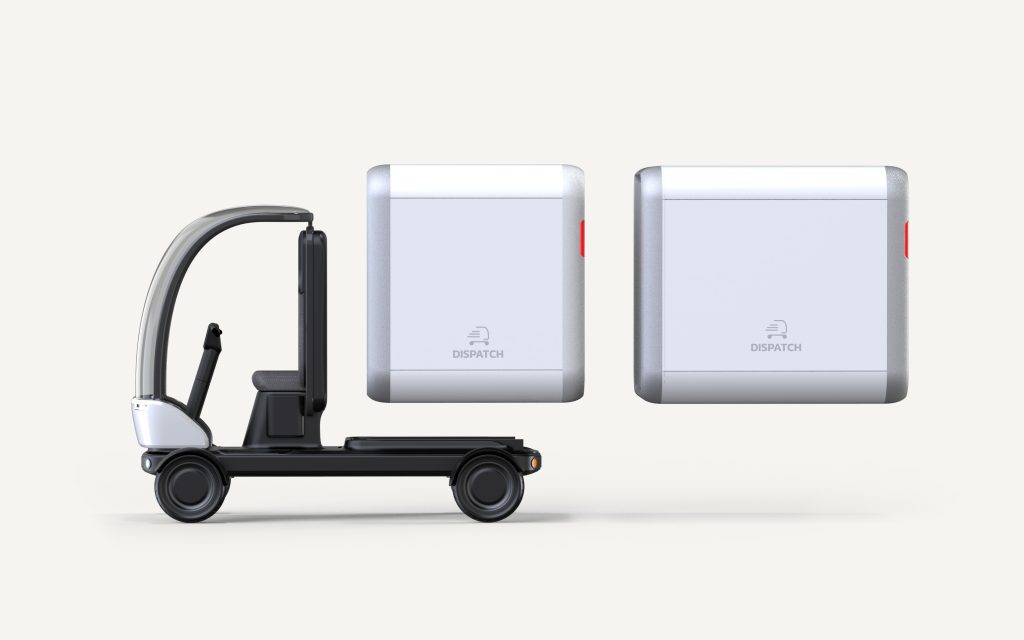Cities across the world are legislating to become car-light and low-speed to limit traffic and make urban areas more livable.
Within those newly designed cities, Marcel Schreuder – Managing Partner of new mobility design studio Springtime Design – says that a growing number of bikes and other micromobility options is to be expected from this transition.
“Although micromobility solutions like front loader cargo bikes have offered a great new and sustainable alternative for last mile delivery, we can expect cities to inevitably reduce the number of large and heavy cargo vehicles that qualify to run on the bike path,” Marcel says.
“They simply introduce too much of a safety risk there.”
This is why Dispatch was specifically designed for the road.
Not a bike and not a car, the fully electric vehicle is an effective solution for clean and agile urban last-mile delivery as cities become less car-focused.
“The Dispatch is positioned to be right in the middle of a cargo bike and a small commercial vehicle.”

Assigning the vehicle to the road from the outset means that it’s designed to be fully electric and able to carry more generous payloads while weaving through cities that are inevitably becoming more low-speed.
At least that’s where Springtime’s homeland the Netherlands is headed, which recently legislated for 30 kph speed limits in Amsterdam’s city centre.
While Marcel credits the shift to electric cars, the efficiency of these vehicles still falls short amidst the current landscape.
“Electric cars still create traffic jams.
“Policies to create less car-focused and more low-speed cities will create room on our roads for new mobility solutions like Dispatch.”
The Specs
Categorised as a L6e delivery vehicle, the Dispatch caters for logistics without the need for a driving licence.
Two 2-kilowatt rear hub motors supply the vehicle with a maximum speed of 45 kph. With a speed that exceeds Amsterdam’s city centre speed limit, the Dispatch is a realistic substitute for cars which are legally forced to travel at the city’s speed limit anyway.
Furthermore, the fully electric vehicle fed by swappable batteries is designed to carry a cargo load of more than 350 kilograms with a power of four kilowatts, exceeding the capabilities of many other cargo delivery vehicles.
Inspired by Italy’s Piaggio Ape just after the Second World War – an affordable compact commercial single seater 3-wheeled vehicle – the Dispatch’s 1-seater compact structure can be mounted with a cargo box of different capacities as well as serving other functions like a pick-up bed.
The fully enclosed cargo box can hold either 1500 or 2000 litres, and protects the packages while simultaneously preventing theft during the ride. Use of a cargo box also maximises logistical efficiency as it enables preloading in the warehouse while the vehicle can complete its journey elsewhere.

Additional features such as cooling or heating can be installed with the cargo to suit food and restaurant delivery, and logistical ease is also optimised by hands-free communication installed in the headrest which controls the GPS on the handlebar.
The open cockpit and transparent cabin that comes with minimal bodywork ensures mutual visibility between both the rider and other road users.
The look
“We wanted Dispatch to be an accessible and friendly vehicle, so it can easily blend into an already crowded urban environment,” Marcel says.
To accomplish this friendly appeal, the Dispatch strays from any straight edges and instead opts for a curvy frame to gracefully weave through city traffic.
With a translucent roof, the vehicle protects the rider in wet weather conditions while also allowing easy entry and exit into the cabin.
“It should have water protection, but it’s not a car. The Dispatch has its own identity.”

The journey
Springtime received funding to conduct a feasibility study on both the technical and commercial side.
One lesson that came from the study is that the Dispatch may require flexible cargo to suit various clients and purposes, such as construction, commercial use and restaurant businesses.
Springtime has also discovered that some logistic systems benefit from swappable cargo, whereas others have their own cargo systems that would need to be compatible with the Dispatch if it were adopted.
From the technical side, the studio has explored the availability of components in the market and which existing vehicles the Dispatch can share technology with.
One area of research is whether to use swappable batteries or in-vehicle charging.
“We are having many conversations to make a detailed development plan of what we still need to get a first prototype on the road,” he says.
Marcel speaks of the goal to incorporate the Dispatch into a plan around neighbourhood hubs which form part of a programme run by the City of Amsterdam. These hubs combine pick-up points for packages with a coffee corner, offer residents shared vehicles for personal mobility, and also use cargo vehicles for delivery services into the connected neighbourhood.
As Springtime finalises its feasibility study, the studio plans to see a working prototype completed by the start of 2025 with vehicles on the road a year later, so is interested in connecting with potential investors and partners now.
